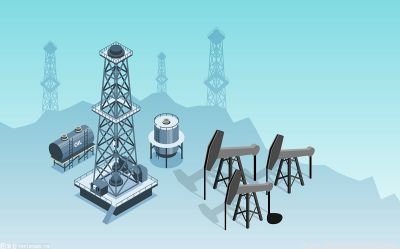How Old is the Continental Crust?
Although we now know that the Earth formed roughly 4.5 billion years ago, the next 600 million years of Earth history is essentially blank. The oldest rock samples yet identified on Earth(from the Northwest Territories in Canada) have an age slightly greater than 3.9 billion years. These rocks have undergone strong metamorphism (changes to the form of the existing rock due to heat and pressure), and it is difficult to tell much about their origin. However, they are not very different from many other typical continental rocks that are much younger. Thus we know that there were at least some fragments of continental crust in existence 3.9 billion years ago.
The question of when the first continents formed is one that has long intrigued geologists, because it is evident that the continental crust has grown and evolved over geologic time. It is probable that there were small continents even before the creation of the 3.9-billion- year-old rocks. The clues that lead to this conclusion are rare and minute and difficult to discover. Where would one look for such evidence? The answer provides a good example of how geologists often work: by using the present as a window into the past. We know that the products of erosion accumulate on the edge of continents today, and there is no reason to think that the situation was different in the past. Even the earliest continents must have had beaches. There is a chance that if some of those very old sediments have been preserved, they might contain mineral grains from even older continents.
 【资料图】
【资料图】
Geologists have thus sifted through some of the oldest known sandstones, which were probably originally laid down along the shorelines of ancient continents, in search of mineral grains that are especially resistant to destruction during weathering and transport. One such search was in a 3.6-billion-year-old sandstone in Western Australia. Some of the grains in these rocks are much older than the sandstone itself and have apparently survived multiple cycles of erosion, deposition, consolidation into solid rock, uplift, and re- erosion. Geologists have found that a few grains of the weathering- resistant mineral zircon from these sandstones have ages in the range of 4.1 to almost 4.3 billion years.
Zircon crystals are small but common constituents of many rocks. The weathering and erosion processes that break down their parent rocks have little effect on the inert zircon crystals. Large, transparent zircon crystals are often sold as gemstones. But the ones that are most useful to geologists are the small zircon grains that are carried long distances in streams or even by wind. These become tracers of the ultimate source for the sedimentary materials in which they now reside.
As their name implies, zircons are rich in the element zirconium. Fortunately, they also incorporate considerable amounts of uranium when they form, and the radioactive decay of uranium produces isotopes of lead that can be measured to determine the age of the grain. Modern techniques are so sensitive that even the minute amount of lead in a single zircon grain can be measured precisely and its age determined. Because these ancient zircons are single grains rather than rock fragments, it is difficult to say much about the types of rock from which they were originally eroded. However, zircons are common in continental rocks such as granite but virtually absent from the ubiquitous basalts of the ocean floor. The inference is that these grains must have come from continental rocks, and if this is indeed the case, the existence of continents can be extended back to almost 4.3 billion years, only a few hundred million years after the formation of the Earth.
Even if the Earth’s crust began to form very early, there are several possible reasons why no fragments of continental rock are preserved from approximately the first 600 million years of our planet’s existence. One is that for much of this period, the Earth was experiencing heavy bombardment from space as the residual material from the planet’s formation process was gathered in by the Earth’s gravity. A second is that the early Earth was very hot. Vigorous circulatory motion of materials in the hot Earth may simply have destroyed much of the early formed crust.
1
►Although we now know that the Earth formed roughly 4.5 billion years ago, the next 600 million years of Earth history is essentially blank. The oldest rock samples yet identified on Earth(from the Northwest Territories in Canada) have an age slightly greater than 3.9 billion years. These rocks have undergone strong metamorphism (changes to the form of the existing rock due to heat and pressure), and it is difficult to tell much about their origin. However, they are not very different from many other typical continental rocks that are much younger. Thus we know that there were at least some fragments of continental crust in existence 3.9 billion years ago.
托福真题(四科目)
https://docs.qq.com/doc/DSVFTUVNQVXNkalJS
关键词:
TF阅读真题第409篇How Old is the Continental Crust?
2023-06-26东方七日谈|“绣花”功夫用得好,“边角料”能变“上好料” 热闻
2023-06-26vivo怎么设置动态壁纸抖音_vivo怎么设置动态壁纸
2023-06-26世界微动态丨深圳公交M355路(关于深圳公交M355路介绍)
2023-06-26我国注册船员总数达190万余人_当前速讯
2023-06-26南方传媒董秘回复: 公司重视人工智能技术在实际工作中的运用
2023-06-26端午节快手本地生活核销金额环比增长超7成-世界热点评
2023-06-26常喝豆浆易患乳腺癌吗? 世界新视野
2023-06-26环球快看点丨你好,小元!2023款元Pro亮相长沙,满电启航!
2023-06-26海港队在越秀山体育场客场迎接广州队的挑战|天天热门
2023-06-26TF阅读真题第409篇How Old is the Continental Crust?
2023-06-26东方七日谈|“绣花”功夫用得好,“边角料”能变“上好料” 热闻
2023-06-26vivo怎么设置动态壁纸抖音_vivo怎么设置动态壁纸
2023-06-26世界微动态丨深圳公交M355路(关于深圳公交M355路介绍)
2023-06-26我国注册船员总数达190万余人_当前速讯
2023-06-26南方传媒董秘回复: 公司重视人工智能技术在实际工作中的运用
2023-06-26端午节快手本地生活核销金额环比增长超7成-世界热点评
2023-06-26常喝豆浆易患乳腺癌吗? 世界新视野
2023-06-26环球快看点丨你好,小元!2023款元Pro亮相长沙,满电启航!
2023-06-26海港队在越秀山体育场客场迎接广州队的挑战|天天热门
2023-06-26Copyright 2015-2022 华南超市网版权所有 备案号:粤ICP备18025786号-52 联系邮箱: 954 29 18 82 @qq.com